Disclosure: My dog blog is supported by dog parents just like you. I only recommend products that I would use on my dogs. All opinions expressed here are my own. I sometimes earn a small affiliate commission, at no extra cost to you, when you click through the affiliate link and purchase something. You can read more about my affiliate policy here.

Are you serious? My Bella is allergic to rice, corn, and peanut butter? This was my reaction on the day that I realized food allergies in dogs are for real!
Corn is the base of her dry food and rice is the base of her wet food. And, of course peanut butter is a staple in treats and pill pockets. She absolutely loves peanut butter!
Argh!!! The choices of food I am giving her daily is wreaking havoc on her little body. Talk about feeling like the worst dog parent ever!!! I realize I didn’t know I was contributing to Bella’s distress, but nonetheless, I feel awful.
Knowing Something is Wrong is the First Step
I have read numerous articles about food allergies in dogs, really any kind of allergies in dogs. I was reading them because Bella was showing outward signs of stress.
According to Dog Nutrition Naturally, allergies in dogs may be characterized by these symptoms:
- itching, scratching
- rashes
- sneezing and nasal discharge
- red eyes
- ear problems
- swollen itchy paws
- bad body odor
- oozing skin sores ( hot spots )
- digestive system disorders

Likewise, symptoms of food allergies in dogs include rubbing their face on the sofa or carpet and chewing the bottom of their paws. You can also see signs of red inflammation in their upper legs, armpits and even the anus area. In addition, most dogs with food allergies have recurring ear infections.
Every single one of these symptoms, my baby was struggling with. I sensed something was wrong, so I took her to our veterinarian, Dr. Wendi Johnson at Yarbrough Veterinary Clinic.
In fact, we have spent a year trying various doctor recommended things, as well as some home remedies. Bella’s main symptoms are scabs all over her skin and recurring ear infections. But, everything we’ve tried has resulted in a temporary fix.
Food Allergies in Dogs Can Be Difficult to Determine
Bella is already a sickly dog. She has congestive heart failure. She has lived with this condition for three years now. I accredit Dr. Johnson for diagnosing her correctly and saving her life.
Bella was already lethargic when I switched veterinarians. Dr. Johnson determined immediately that she was overdosing on prescribed medication. Then, she discovered the heart condition and put her on the appropriate dosage of medication.
That is to say, I trust our veterinarian.
Bella’s heart condition displays similar allergy symptoms of congestion, a runny nose, red eyes, and ear infections. Plus, contact, flea, and inhalant allergies all have similar symptoms to food allergies.
Therefore, it is difficult to determine if food allergies in dogs are the culprit of the symptoms a dog is displaying.
Bella’s symptoms were consistent through every season. Therefore, Dr. Johnson was convinced that food allergens were to blame. At her suggestion, we started eliminating food possibilities and changing brands of foods.
Might Be Food Allergies, But Which Foods?
Healthy Pets With Dr. Karen Becker notes that regardless of why the allergic response is occurring, both traditional and holistic vets recognize the animal’s body needs a break from the food he’s been eating.
“An allergic pet’s immune system needs a chance to simmer down, which usually results in a reduction in symptoms.”
Dr. Karen Becker
So, really without an allergy test, the only way to determine food allergies is an elimination diet.
There are a few possible diets that veterinarians recommend:
- The limited ingredient diet limits the ingredients to try to pin down specific allergens causing a dog’s reactions.
- A novel ingredient diet is where a dog is introduced to ingredients they’ve never been exposed to. Therefore, a dog is less likely to have a reaction.
- A prescription diet is prescribed by a veterinarian. To clarify, the vet prescribes a kibble-based or ingredient specific diet designed with hypoallergenic ingredients.
It can be very difficult to determine which ingredient is the culprit. In addition, there could be multiple ingredients a dog is having an allergic reaction to.
“Though tricky, the best way to determine which allergens are affecting your pup is to do an elimination diet. Then, reintroduce foods one at a time.”
Dr. Susan Wynn.
Dr. Wynn is a veterinarian specializing in nutrition and integrative medicine.
Supporting a Dog With Food Allergies Can Be Challenging
For this past year, Bella’s food allergies have been incredibly frustrating. Not just for me, but for her too! It has been gross to snuggle with her because of scaly sores all over her skin.

Moreover, her non-stop scratching at her ears, paws, and face is driving me crazy. Then, she drags her booty across the carpet to scratch it and I come uncorked!
I tried vet prescribed doses of Benadryl and Claritin, but the itching persisted. Then, I tried topical solutions, such as oatmeal shampoo, coconut oil, and hotspot products. I eliminated ingredient after ingredient from her diet.
Nothing was helping and I had reached my wit’s end!
I called Dr. Johnson to find out the next step. Her suggestion was food allergy testing through blood work. She informed me of the simple procedure of drawing a small sample of blood. Then, it is analyzed for a reaction to a vast array of food allergens.
“Blood allergy testing is the most common form of allergy testing because it is convenient and easy to do.”
Dr. Wendi Johnson
We live in a small community, therefore, Bella’s blood had to be sent off for analysis. However, we only had to wait a little less than a week for the results.
Finally, an Answer!
The results were in a result booklet entitled, Client Specific Allergy Booklet from Spectrum Vet, a Nextmune Company. The booklet is perfect for me to reference when it comes to Bella’s allergies.
The result booklet provides information, support, and food product recommendations. Therefore, it ensures I receive the greatest value out of the testing, because allergy testing is an investment.
Bella’s allergy testing was only for food allergens. There were 24 foods that her blood was analyzed for a reaction. She tested positive for 33-percent of the food allergens.
She tested positive for the following allergens:
- Alfalfa
- Corn
- Rice
- Soybean
- Venison
- White potato
- Green pea
- Peanut
The top food allergens for dogs are:
- Beef
- Rabbit
- Pork
- Dairy
- Chicken
- Lamb
- Fish
- Eggs
- Corn
- Wheat
- Soy
Treatment for Food Allergies in Dogs
I know that allergies can’t be cured, nor can I help prevent further development of food allergies. However, food allergies can certainly be managed. The best treatment for food allergies in dogs is avoidance.
Now that Bella’s food allergens have been identified, avoidance will be easier. Therefore, a diet, free of the foods she is allergic to, is essential to her quality of life.
According to Spectrum Vet, 50-percent of a dog’s allergy symptoms improve with dietary change alone. However, up to 90-percent of a dog’s allergy symptoms improve with diet and hyposensitization.
Hyposensitization is more commonly known as allergy shots. To clarify, it is an allergy treatment option. For now, we are trying the dietary change for Bella’s allergy treatment option.
In Conclusion
It does seem like more and more dogs are suffering from food allergies. Therefore, food allergies in dogs are a rising concern for dog parents. According to WebMD, 10-percent of dogs with allergies are affected by ones that are food-related.
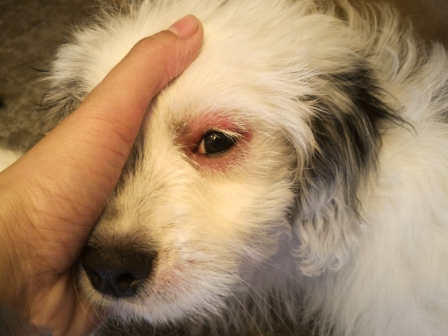
Food allergies in dogs can begin at any age. In fact, they can start even if a dog has been eating the same food for months or years.
A food allergy occurs when a dog’s immune system mistakenly believes a specific food is harmful. Consequently, the immune system responds with antibodies, which triggers a series of dangerous symptoms.
It is recommended by many holistic veterinarians to rotate through three or four proteins in your doggo’s diet. It provides your fur baby with a broad nutritional base. Further, it reduces the risk of food allergies by providing lots of variety.
If you have any questions or concerns, you should always visit or call your veterinarian. Above all, they are your best resource to ensure the health and well being of your fur baby.
Is your fur baby experiencing food allergies? What are your doggo’s food allergens? Tell us all about it in the comments.
You might enjoy these posts on our blog:
10 Tips to Protect Your Dog When the Weather Outside is Frightful
Oatmeal Dog Shampoo Can Relieve the Itch
If you want to save this post to your Pinterest account, you can pin one of the following images.
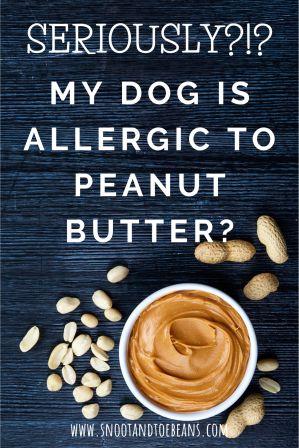
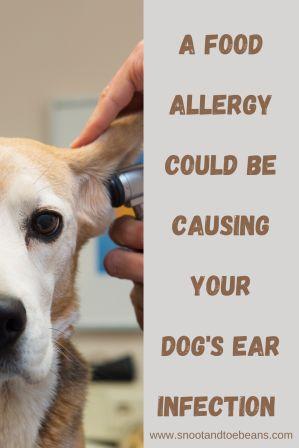
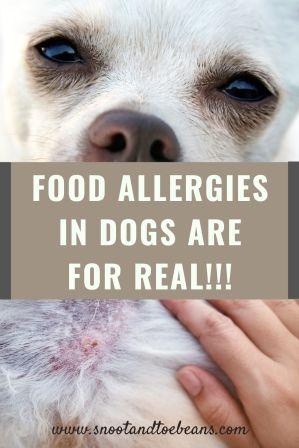
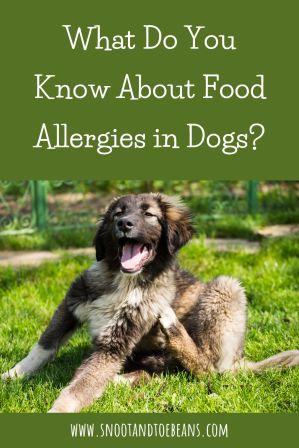

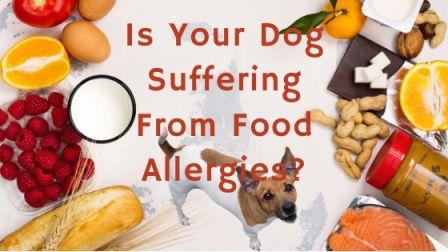
Pingback: COVID-19 in Dogs - Do NOT Hit the Panic Button | Snoot and Toebeans